HESI > QUESTIONS & ANSWERS > HESI A2 Critical Thinking Questions and Answers Already Graded A+ (All)
HESI A2 Critical Thinking Questions and Answers Already Graded A+
Document Content and Description Below
HESI A2 Critical Thinking Questions and Answers Already Graded A+ 1. In an interview, the nurse may find it necessary to take notes to aid his or her memory later. Which statement is true regarding... note-taking? A) Note-taking may impede the nurse's observation of the patient's nonverbal behaviors. B) Note-taking allows the patient to continue at his or her own pace as the nurse records what is said. C) Note-taking allows the nurse to shift attention away from the patient, resulting in an increased comfort level. D) Note-taking allows the nurse to break eye contact with the patient, which may increase his or her level of comfort. ✔✔A) Note-taking may impede the nurse's observation of the patient's nonverbal behaviors. Page: 31 Some use of history forms and note-taking may be unavoidable. But be aware that notetaking during the interview has disadvantages. It breaks eye contact too often, and it shifts attention away from the patient, which diminishes his or her sense of importance. It also may interrupt the patient's narrative flow, and it impedes the observation of the patient's nonverbal behavior. 2. During an interview, the nurse states, "You mentioned shortness of breath. Tell me more about that." Which verbal skill is used with this statement? A) Reflection B) Facilitation C) Direct question D) Open-ended question ✔✔D) Open-ended question Page: 32 The open-ended question asks for narrative information. It states the topic to be discussed but only in general terms. The nurse should use it to begin the interview, to introduce a new section of questions, and whenever the person introduces a new topic. 3. A nurse is taking complete health histories on all of the patients attending a wellness workshop. On the history form, one of the written questions asks, "You don't smoke, drink, or take drugs, do you?" This question is an example of: A) talking too much. B) using confrontation. C) using biased or leading questions. D) using blunt language to deal with distasteful topics. ✔✔C) using biased or leading questions. Page: 36 This is an example of using leading or biased questions. Asking, "You don't smoke, do you?" implies that one answer is "better" than another. If the person wants to please someone, he or she is either forced to answer in a way corresponding to their implied values or is made to feel guilty when admitting the other answer. 4. During an interview, a parent of a hospitalized child is sitting in an open position. As the interviewer begins to discuss his son's treatment, however, he suddenly crosses his arms against his chest and crosses his legs. This would suggest that the parent is: A) just changing positions. B) more comfortable in this position. C) tired and needs a break from the interview. D) uncomfortable talking about his son's treatment. ✔✔D) uncomfortable talking about his son's treatment. Page: 37 Note the person's position. An open position with the extension of large muscle groups shows relaxation, physical comfort, and a willingness to share information. A closed position with the arms and legs crossed tends to look defensive and anxious. Note any change in posture. If a person in a relaxed position suddenly tenses, it suggests possible discomfort with the new topic. 5. The nurse is interviewing a patient who has a hearing impairment. What techniques would be most beneficial in communicating with this patient? A) Determine the communication method he prefers. B) Avoid using facial and hand gestures because most hearing-impaired people find this degrading. C) Request a sign language interpreter before meeting with him to help facilitate the communication. D) Speak loudly and with exaggerated facial movement when talking with him because this helps with lip reading. ✔✔A) Determine the communication method he prefers. Pages: 40-41 The nurse should ask the deaf person the preferred way to communicate—by signing, lip reading, or writing. If the person prefers lip reading, then the nurse should be sure to face him or her squarely and have good lighting on the nurse's face. The nurse should not exaggerate lip movements because this distorts words. Similarly, shouting distorts the reception of a hearing aid the person may wear. The nurse should speak slowly and should supplement his or her voice with appropriate hand gestures or pantomime. 6. The nurse is performing a health interview on a patient [Show More]
Last updated: 6 months ago
Preview 1 out of 87 pages
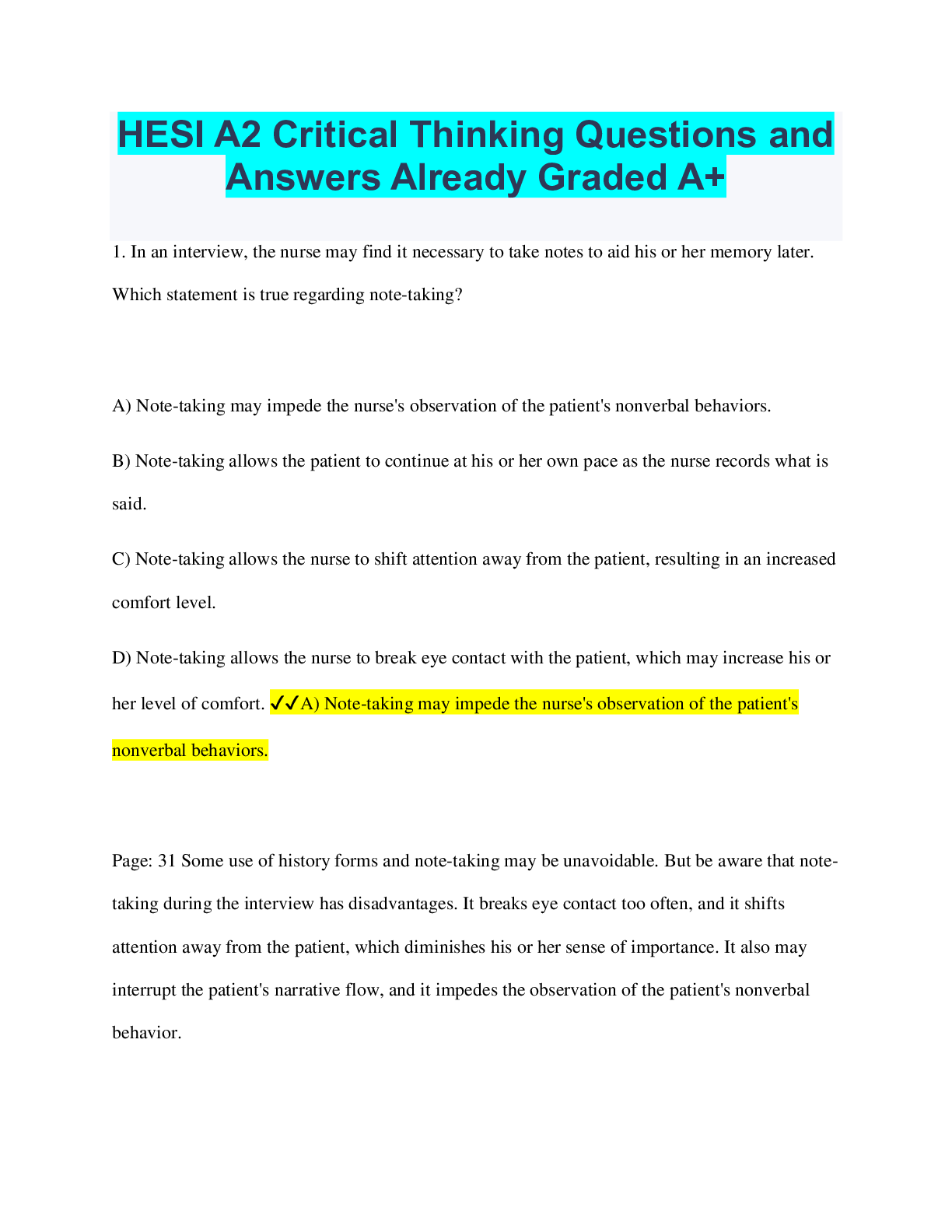
Reviews( 0 )
Document information
Connected school, study & course
About the document
Uploaded On
Oct 16, 2023
Number of pages
87
Written in
Additional information
This document has been written for:
Uploaded
Oct 16, 2023
Downloads
0
Views
50

.png)
.png)
.png)
.png)
.png)
.png)


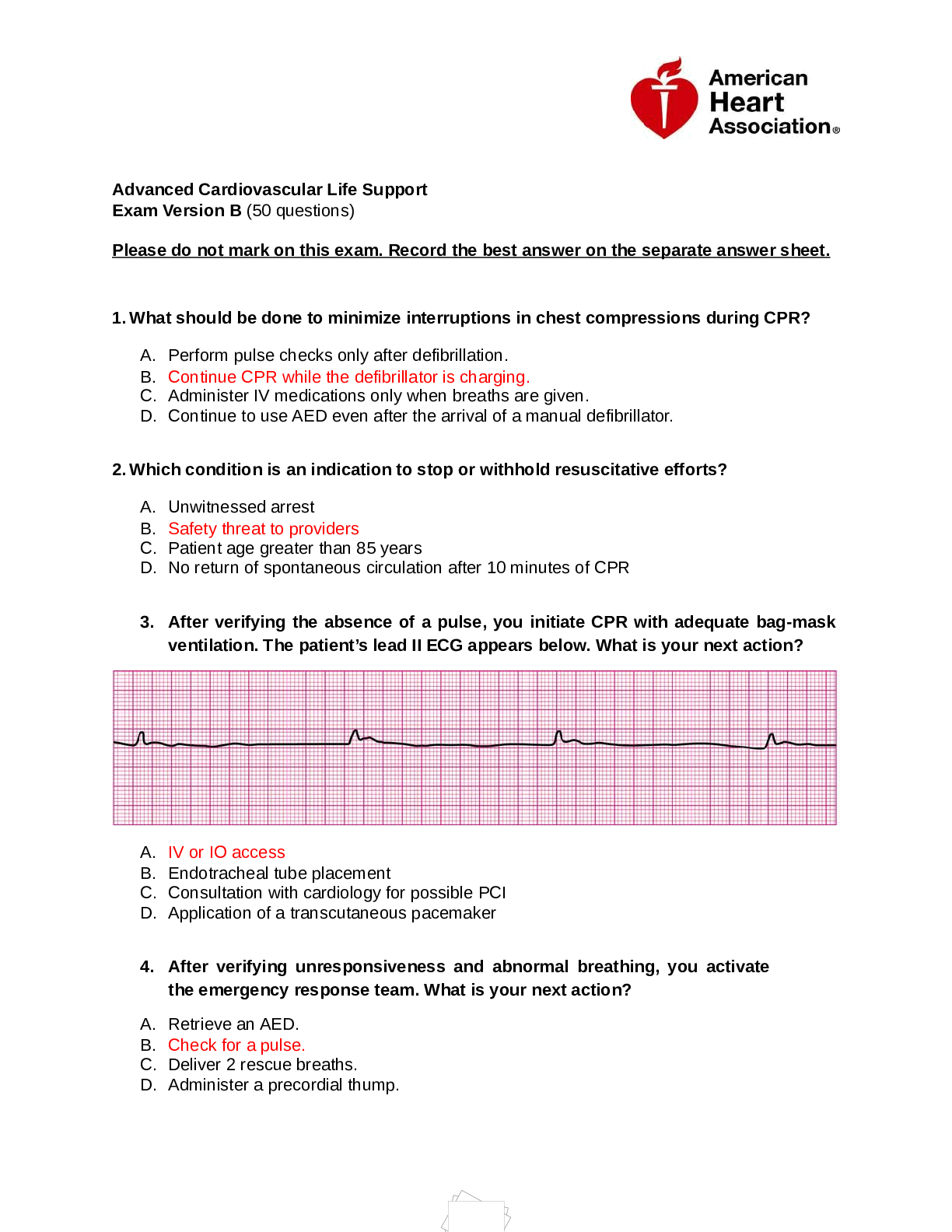


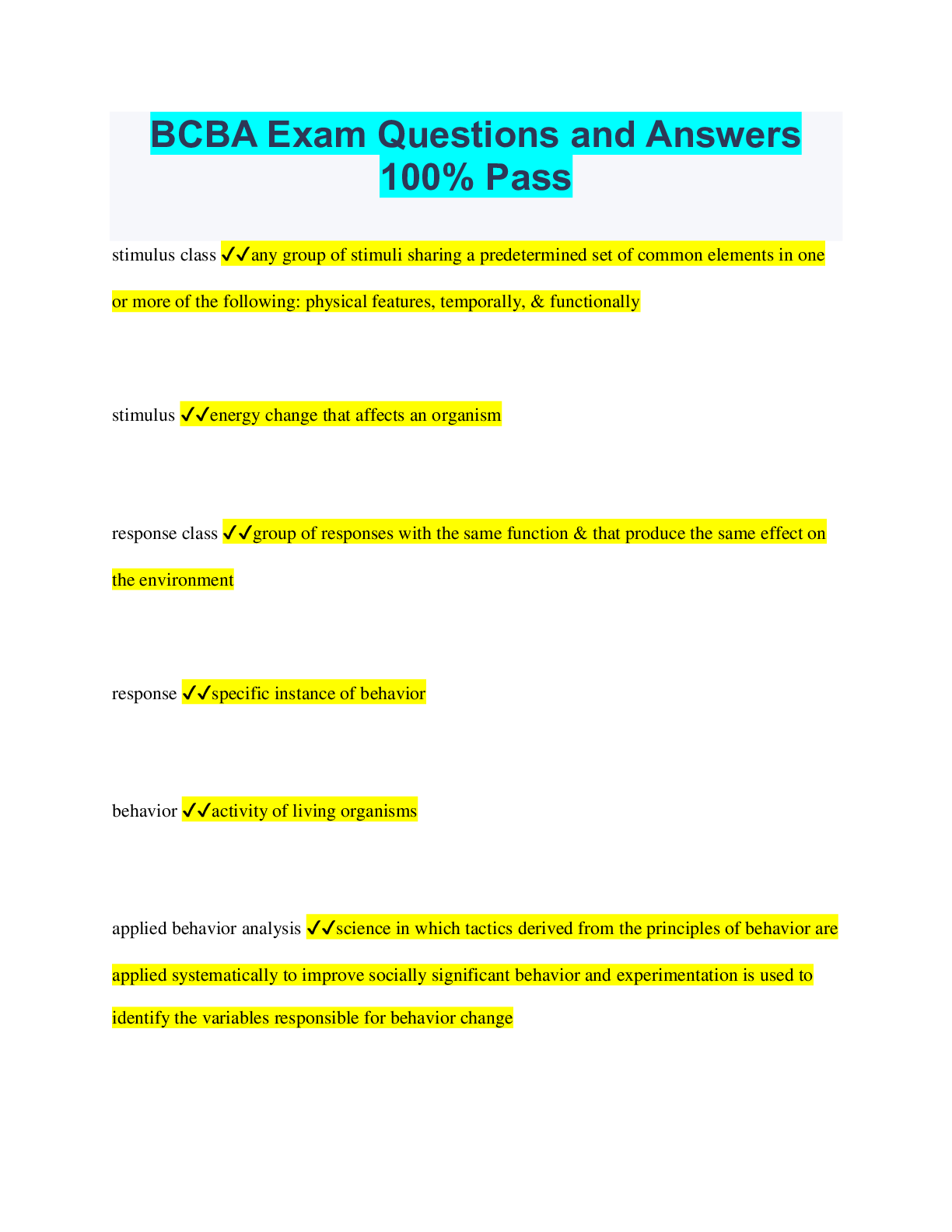
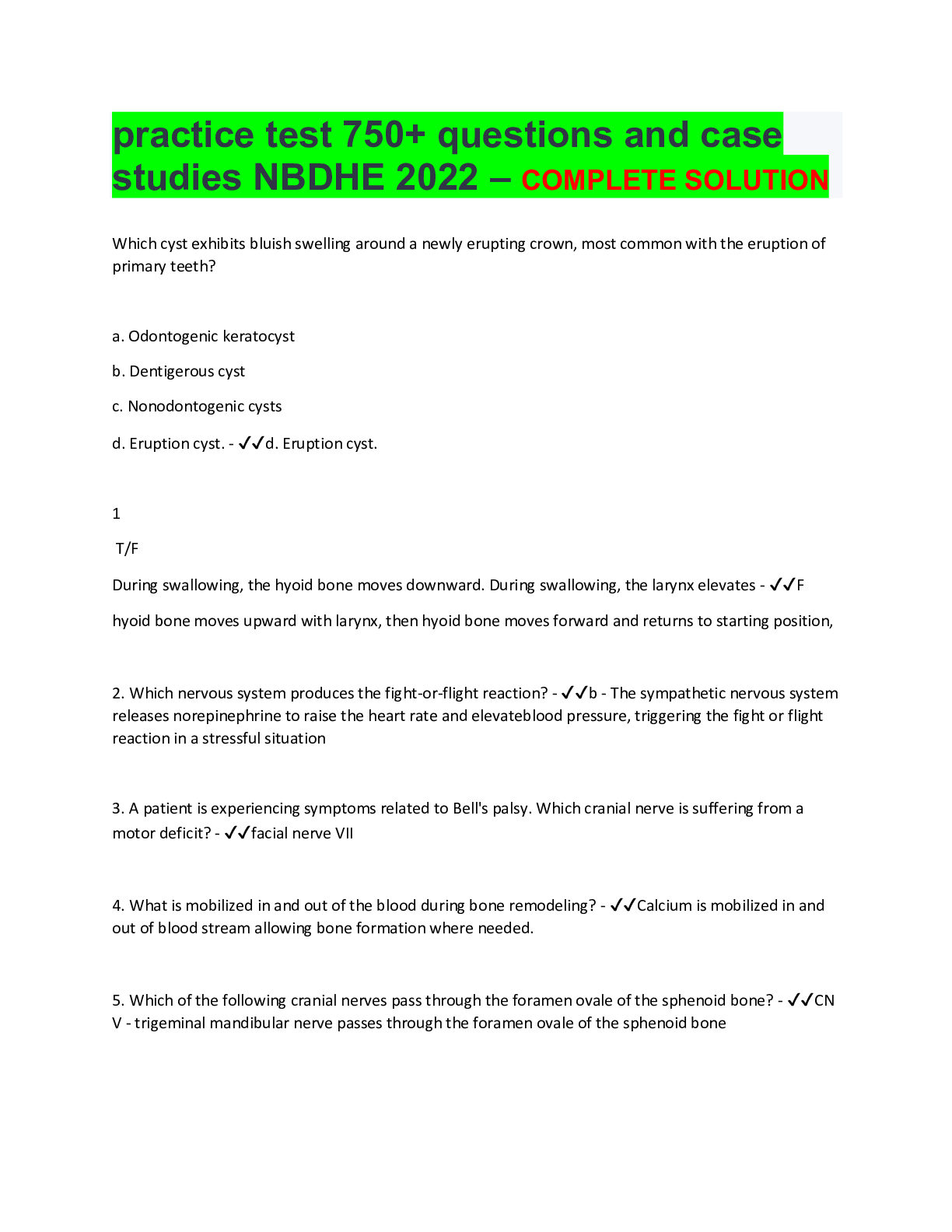
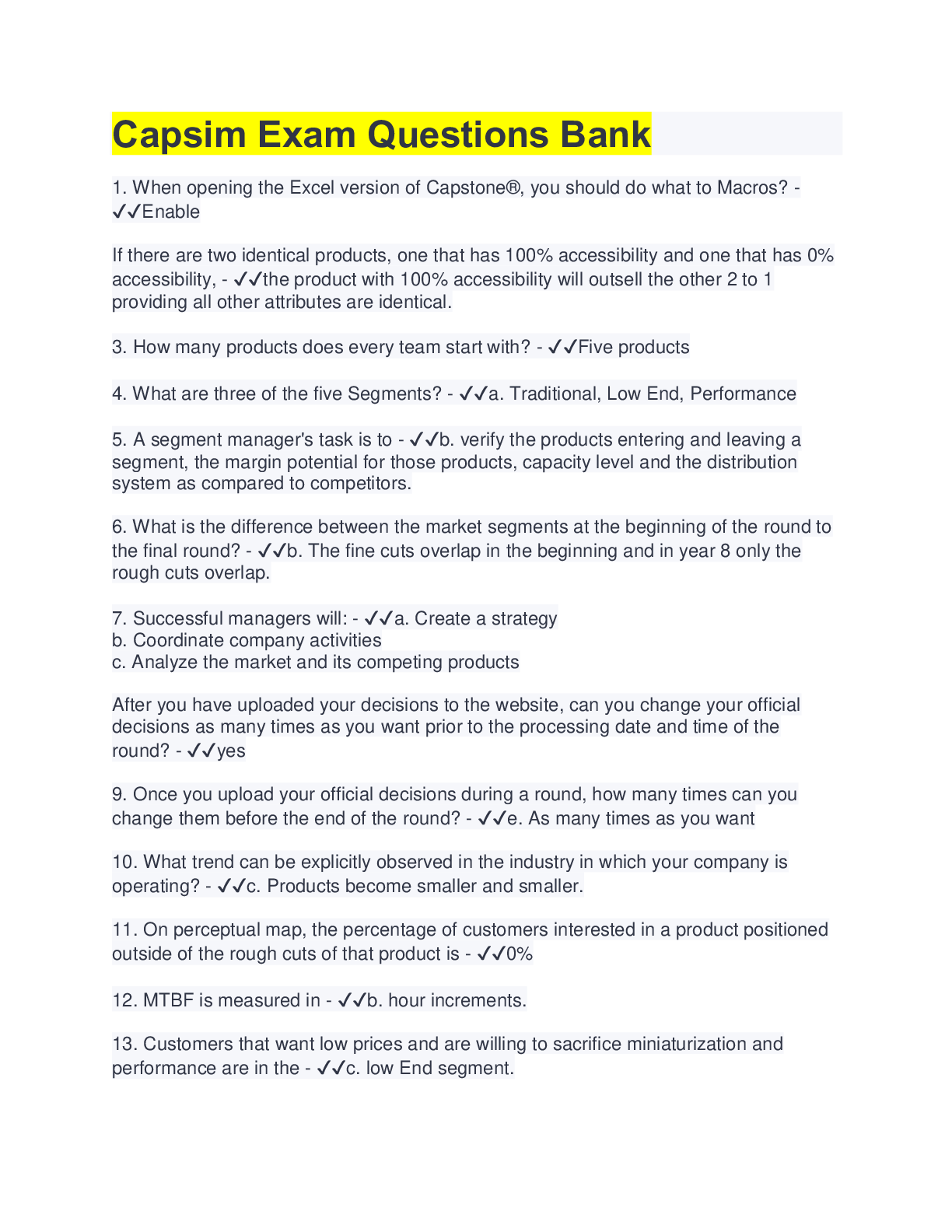


.png)
.png)
.png)

.png)

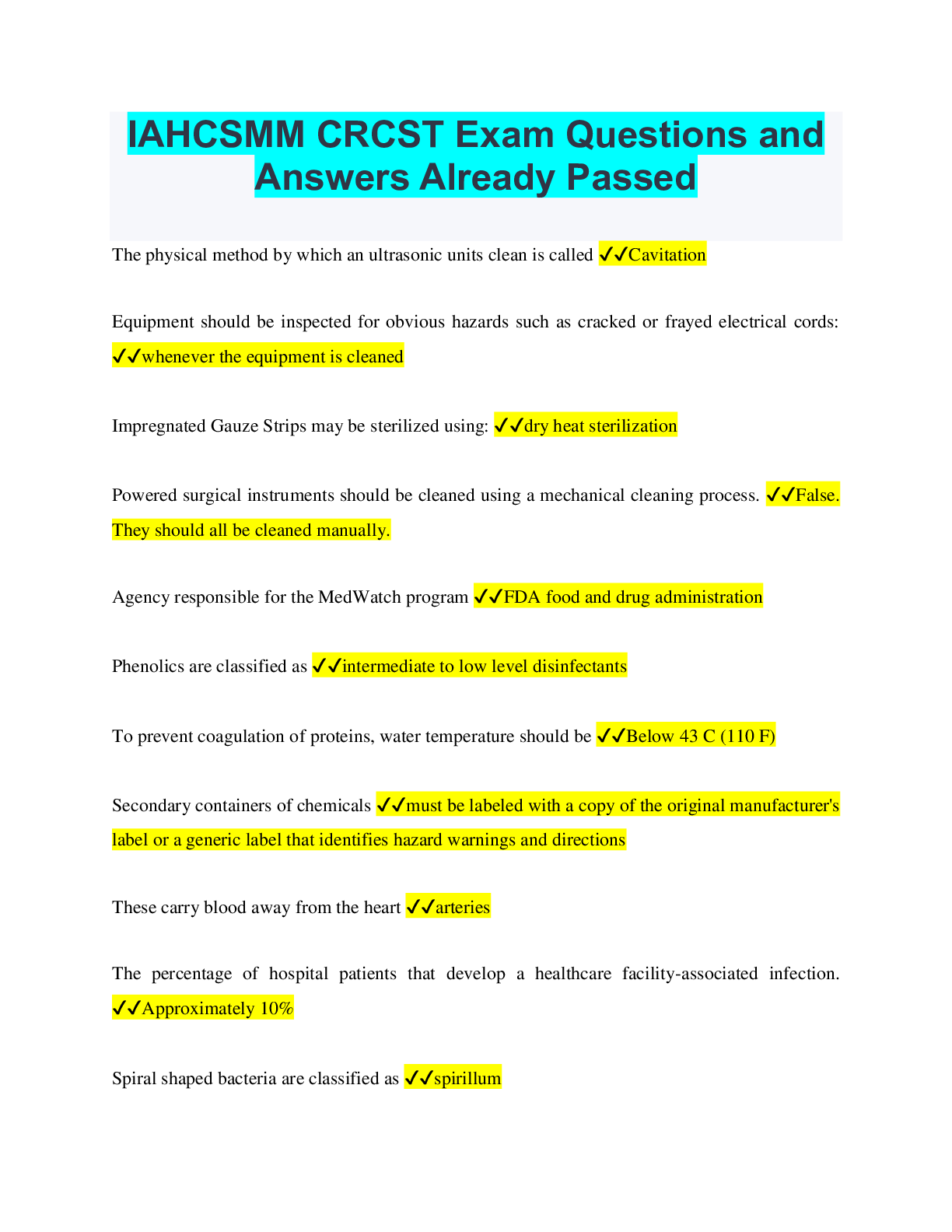
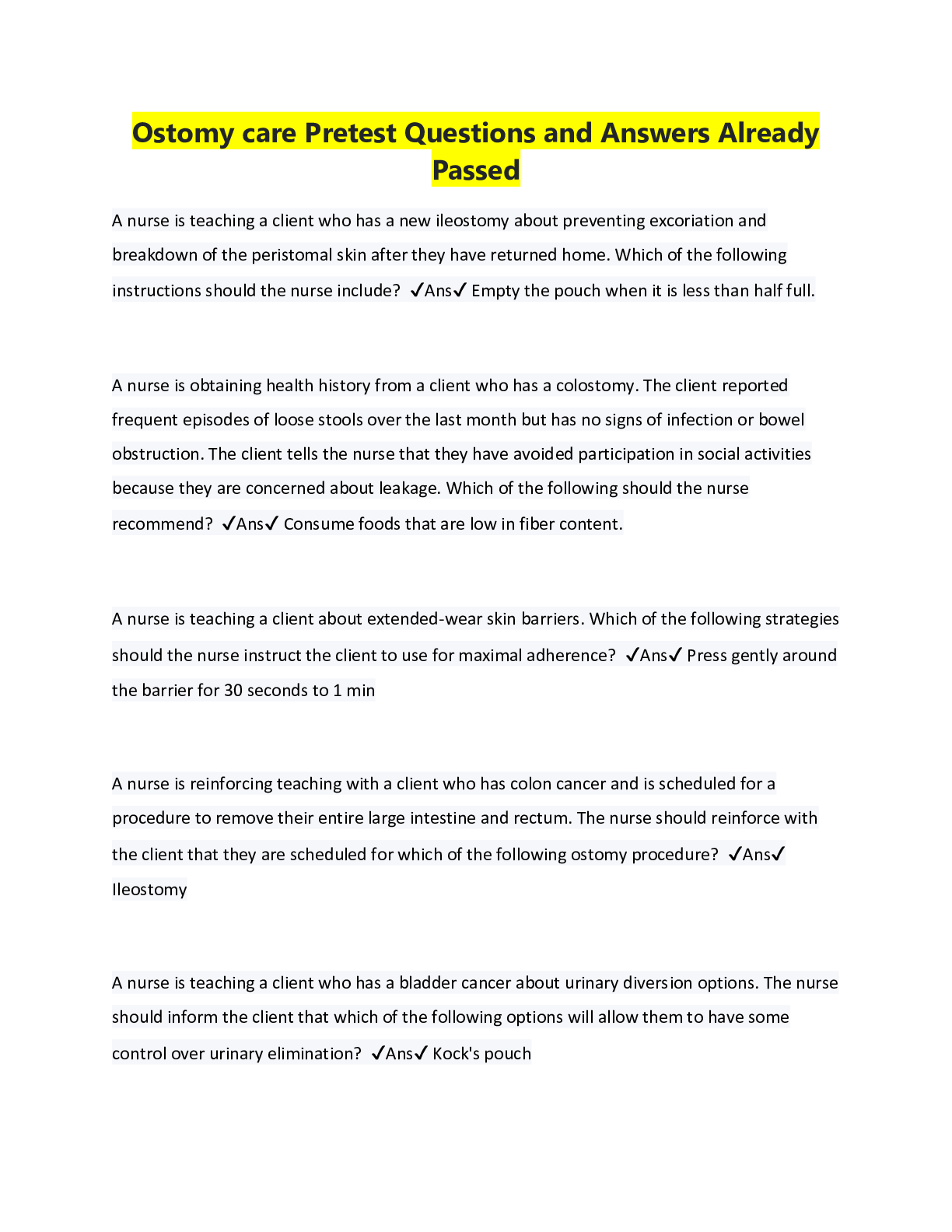
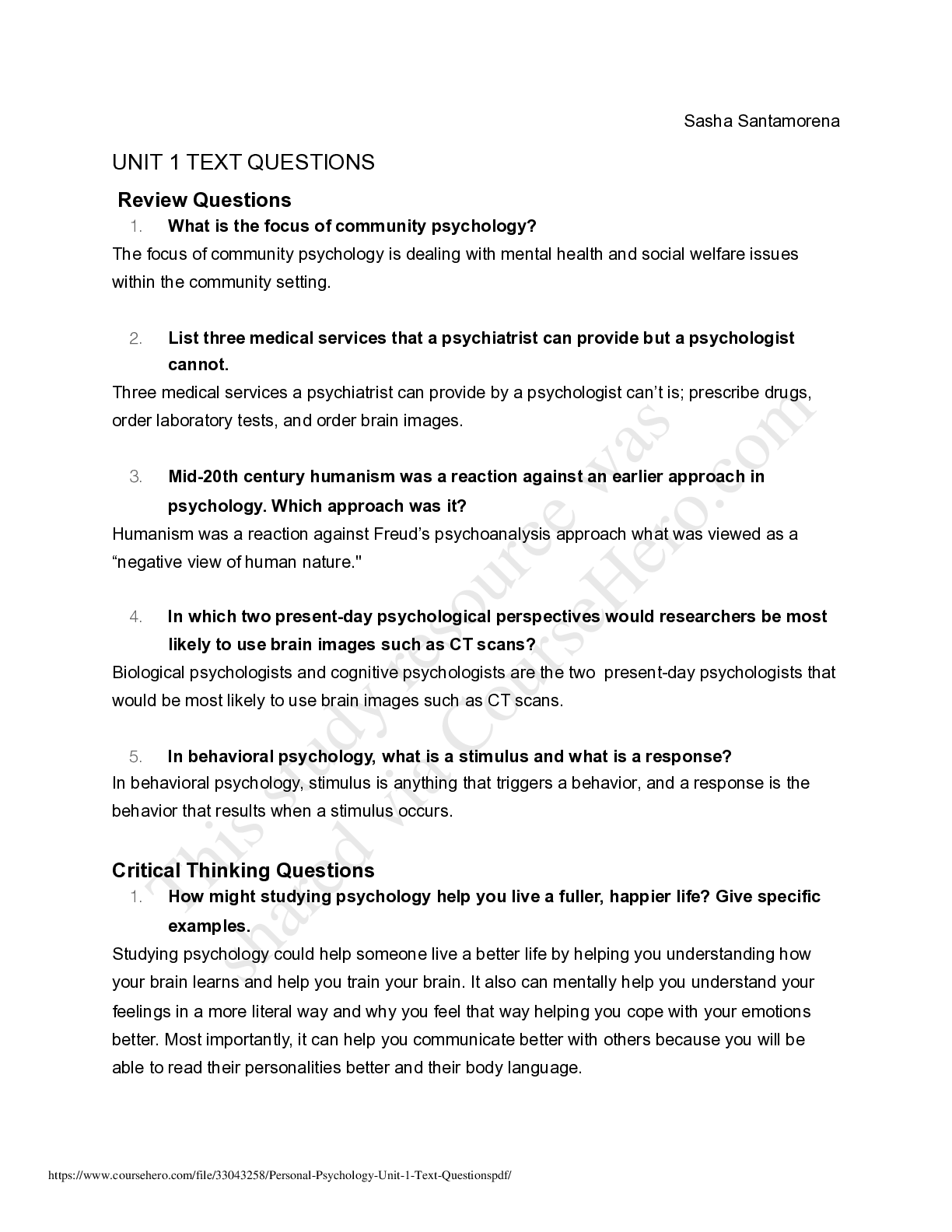
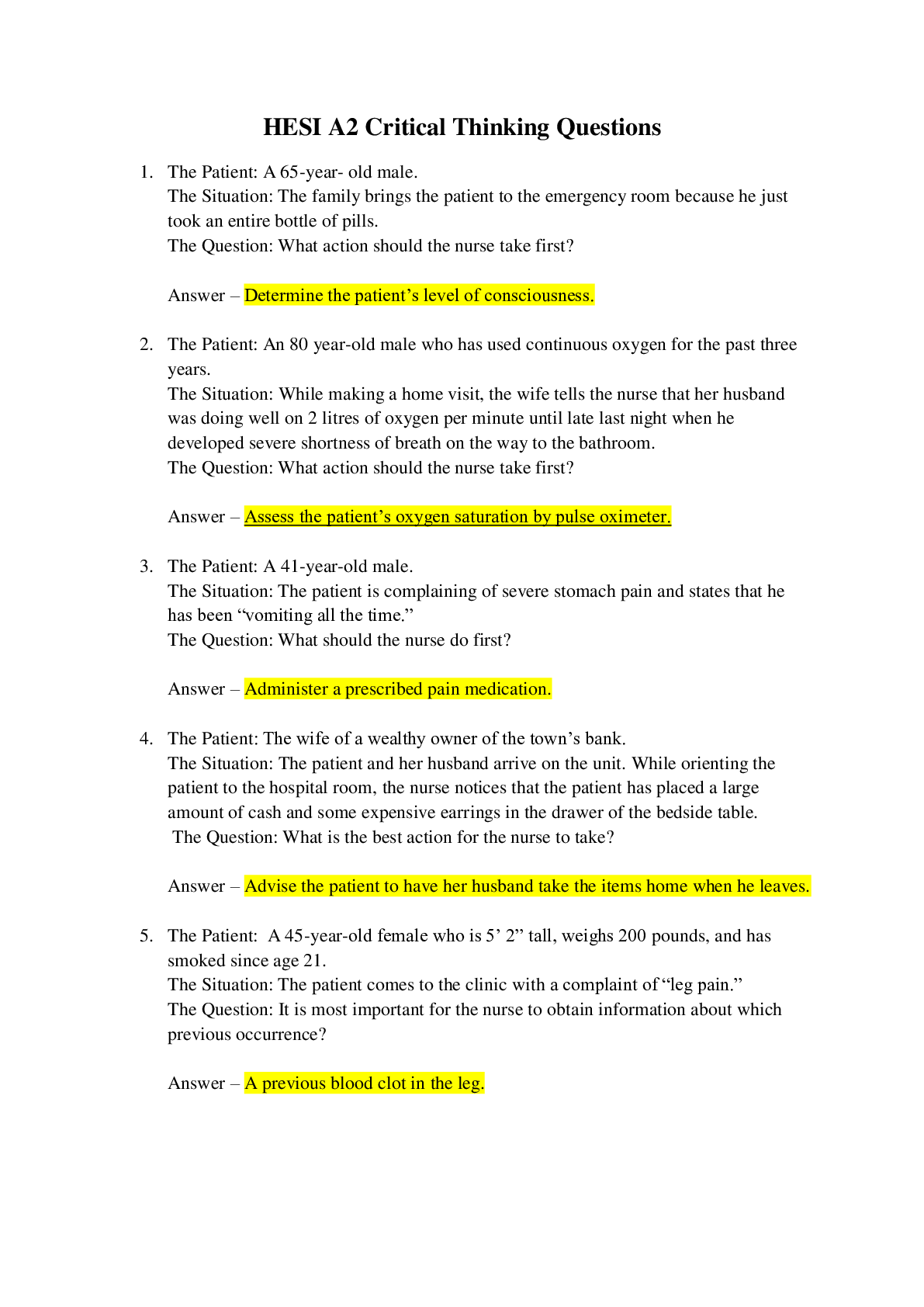

.png)
.png)
.png)
.png)
.png)
.png)

